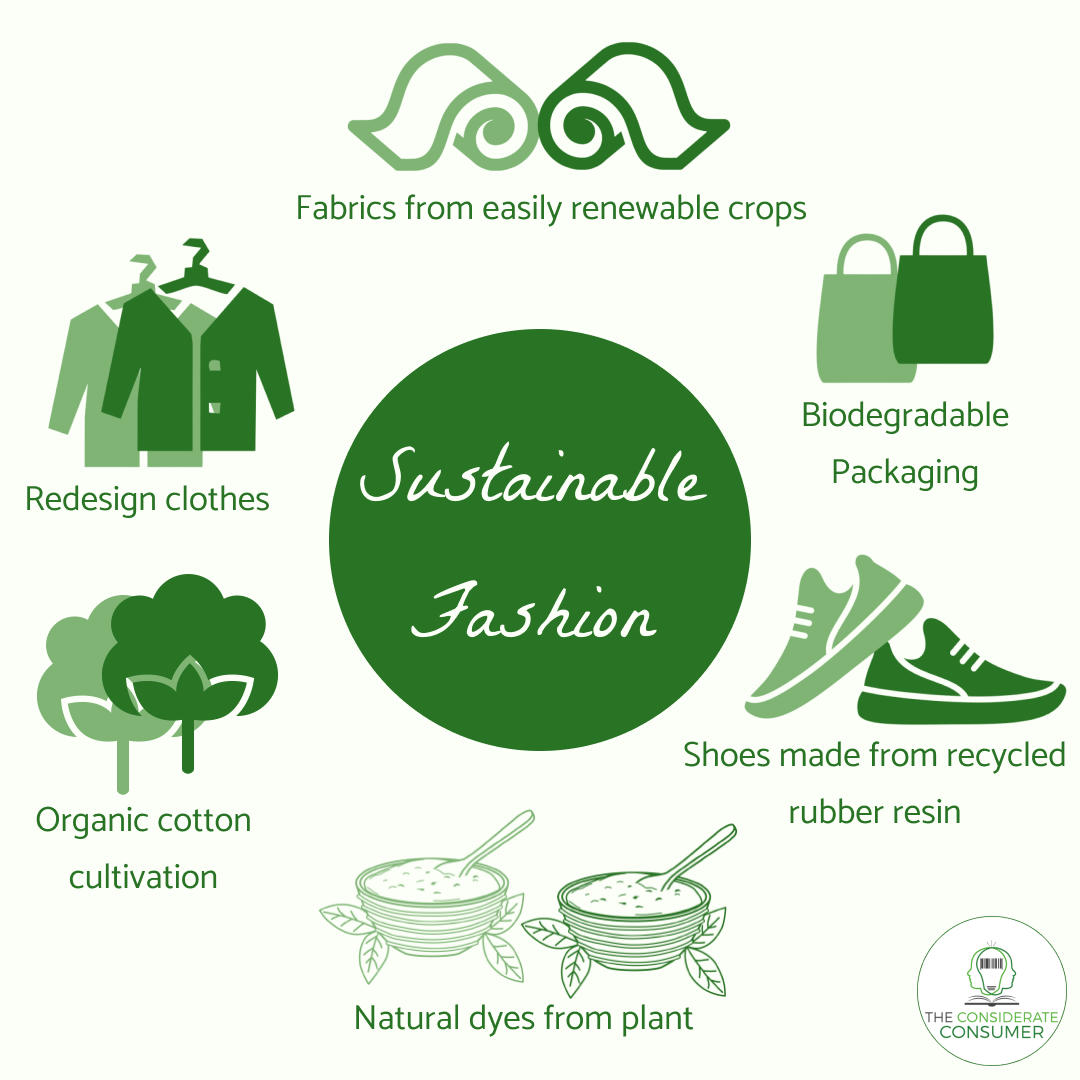Just How Cape Town Sustainable Fashion is Shaping Eco-Conscious Shopping
Just How Cape Town Sustainable Fashion is Shaping Eco-Conscious Shopping
Blog Article
Stay Ahead of the Contour by Checking Out Cutting-edge Style Fads
In an industry as vibrant as fashion, remaining in advance entails more than simply following present fads-- it demands an exploration of advancement. Smart fabrics, for circumstances, are transforming garments right into useful work of arts, while 3D printing is revolutionizing style processes with its customizable, waste-reducing capacities. As sustainability ends up being a keystone, advancements like environment-friendly materials and round style techniques are improving environmental duty - Cape Town Sustainable Fashion. Additionally, the merging of technology and fashion declares a new period of customer engagement. Just how, then, can these emerging patterns redefine the future of fashion, and what effects do they hold for brand names looking for to grow in this evolving landscape?

Accepting Smart Textiles
In recent times, the fashion business has actually observed a transformative shift with the assimilation of smart fabrics, an innovative advancement that mixes technology with textile. This evolution represents not only a blend of looks and functionality yet also a considerable jump in the direction of sustainability and personalization in vogue. Smart fabrics, additionally called e-textiles, installed advanced electronic devices such as sensing units and conductive strings within the material, allowing garments to communicate with the environment or the user.
These fabrics are made to keep an eye on physiological specifications, such as heart price or body temperature, offering real-time health and wellness analytics. Beyond health and wellness applications, clever textiles are also being used for flexible garments, which can alter shade or pattern in reaction to ecological stimuli, therefore supplying a dynamic fashion experience.
Additionally, the development of energy-harvesting textiles that generate power from motion or sunshine is paving the means for self-dependent wearable innovation. This innovation is interesting environmentally mindful consumers and designers intending to minimize the eco-friendly footprint of fashion. As study and growth in this area breakthrough, smart textiles are anticipated to become increasingly widespread, improving the landscape of contemporary style with their multifunctional capabilities.
The Surge of 3D Printing
Changing the production landscape, 3D printing has become a game-changer in the apparel industry. This innovative technology has actually made it possible for designers to push the limits of imagination, generating detailed and tailored garments that were formerly inconceivable. By leveraging electronic layout and additive production, 3D printing promotes the creation of complicated geometries and patterns, permitting designers to try out brand-new textures and frameworks.
A notable benefit of 3D printing in vogue is its ability to create on-demand, decreasing waste and minimizing inventory requirements. This performance not only enhances production procedures however also permits fast prototyping, allowing designers to bring their visions to life in a shorter duration. Moreover, 3D printing supports customization somewhat unmatched by standard approaches, supplying individualized fits and distinct styles tailored to specific customer preferences.
The rise of 3D printing has actually likewise democratized fashion, making it easily accessible to emerging designers who can now fabricate high-quality pieces without significant financial investment in typical production facilities. As modern technology proceeds to development, the garment industry is poised to harness the full capacity of 3D printing, discovering brand-new materials and strategies that will undoubtedly redefine just how style is conceived and produced.
Lasting Fashion Developments
As the fashion business comes to grips with the pressing need for environmental duty, sustainable fashion technologies have arised at the leading edge of transformative modification. The expanding recognition of eco-friendly effect has actually sustained a shift towards even more eco-conscious methods and materials. Brands and designers are currently focusing on sustainability, including approaches that minimize waste and decrease carbon footprints.
One significant growth is the surge of round style, which highlights recycling and upcycling to prolong the lifecycle of garments. This strategy not just minimizes waste yet also encourages consumers to adopt a much more conscious method to apparel intake.
Another development hinges on the fostering of ingenious dyeing methods that use natural dyes or waterless procedures, thereby decreasing the substantial quantities of water and chemicals typically utilized in fabric dyeing. Furthermore, advancements in biotechnology have resulted in the production of lab-grown natural leather and materials, offering cruelty-free and ecologically pleasant alternatives to traditional products. Via these introducing efforts, the fashion business is more tips here making purposeful strides towards a more sustainable future.

Tech-Integrated Garments
Tech-integrated clothing stands for a groundbreaking fusion of style and technology, improving just how people communicate with their garments. This ingenious domain name is noted by the addition of wise fabrics and ingrained electronic elements, boosting both capability and visual appeal. From fitness trackers installed in sports apparel to warmed jackets regulated via smartphone applications, tech-integrated garments uses customers extraordinary benefit and versatility.
Introducing brands are driving this pattern, focusing on developing garments that react to environmental stimuli or customer commands. For example, some garments can alter color or pattern in reaction to temperature level shifts, while others integrate biometric sensors to keep track of wellness metrics like heart price or stress and anxiety degrees. The seamless integration of innovation right into textiles likewise reaches ecological sustainability, with efforts to create self-cleaning textiles or garments that adjust to weather problems, thus decreasing the need for multiple layers.
Furthermore, the arrival of wearable modern technology is not just limited to clothing yet reaches accessories like watches and eyewear, additional widening the range of tech-integrated fashion. As the industry proceeds to innovate, the capacity for personalization and personalization in clothing grows, providing consumers unique, tech-enhanced style experiences that satisfy their private requirements and choices.
Future of Virtual Fashion
Recently, the future Full Article of virtual style has actually emerged as a transformative force within the sector, leveraging innovations in electronic modern technology to redefine just how fashion is developed, experienced, and taken in. By integrating increased fact (AR), online fact (VR), and 3D style devices, designers can currently craft immersive and interactive experiences that go beyond conventional style boundaries. Online fashion permits the development of garments that exist entirely in electronic atmospheres, supplying endless opportunities for development without the limitations of physical manufacturing.
This electronic shift not only offers chances for creative expression but likewise addresses sustainability worries integral in standard fashion practices. Cape Town Sustainable Fashion. By eliminating the need for physical resources, online style minimizes waste and decreases carbon impacts. Moreover, the surge of digital style straightens with the raising customer need for distinct and customized experiences, as online garments can be tailored and customized to specific preferences effortlessly

Verdict
The style sector's future lies in the combination of lasting methods and ingenious innovations. Online fashion is poised to redefine customer interactions.
In recent years, the style industry has witnessed a transformative shift with the combination of clever fabrics, an advanced innovation that mixes technology with textile.As the style market grapples with the pressing demand for ecological responsibility, sustainable style developments have actually emerged at the forefront of transformative adjustment.In current years, the future of virtual fashion has actually emerged as a transformative pressure within the sector, leveraging developments in digital innovation to redefine how style is created, experienced, and taken in. The surge of online fashion aligns with the enhancing customer demand for distinct and personalized experiences, as virtual garments can be tailored and tailored more tips here to individual preferences with convenience.
The style market's future lies in the combination of lasting methods and innovative innovations.
Report this page